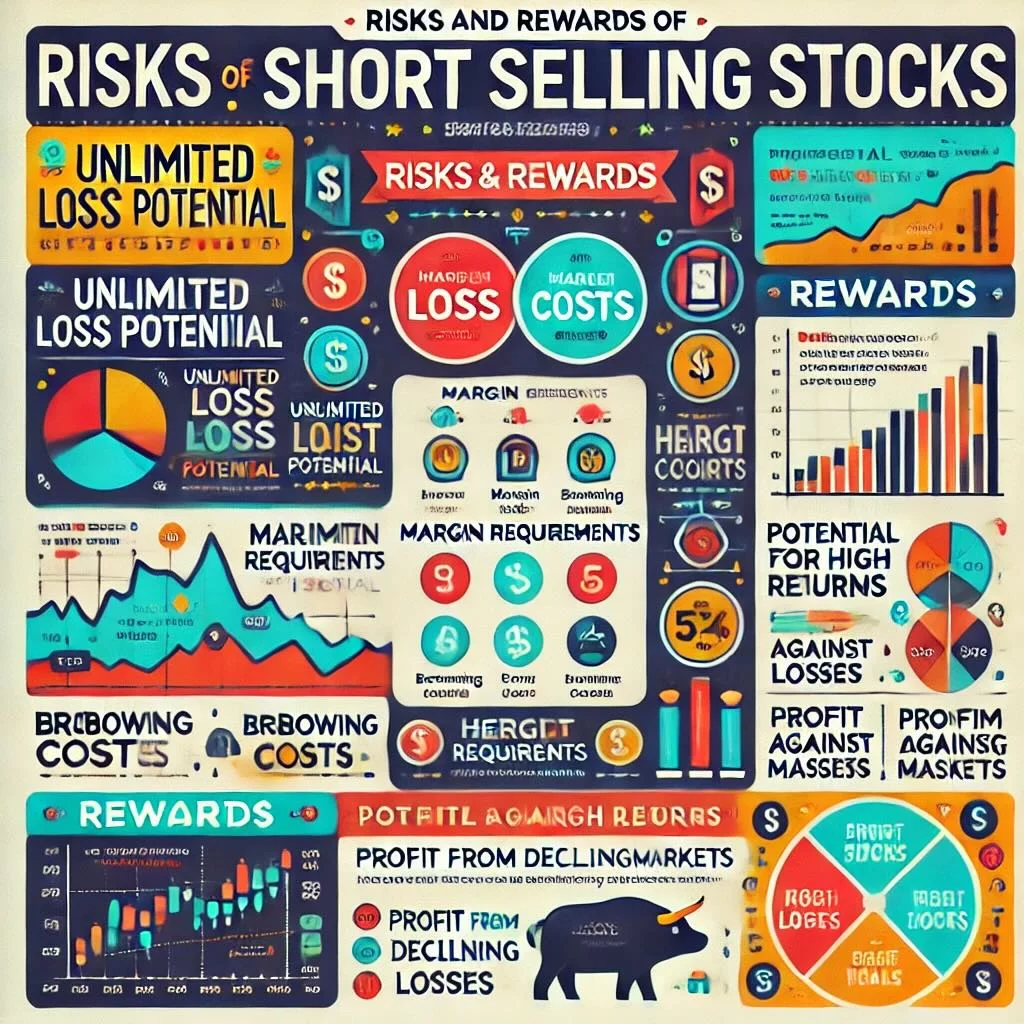Warren Buffett’s name conjures up images of investment success, financial wisdom, and measured thinking. People often characterize him by his folksy charm and preference for “boring” businesses, but there is nothing mundane about the global perspective he brings to his investment decisions. From railroads and consumer staples to technology giants, Buffett has demonstrated an uncanny ability to identify industries that thrive in our interconnected world.
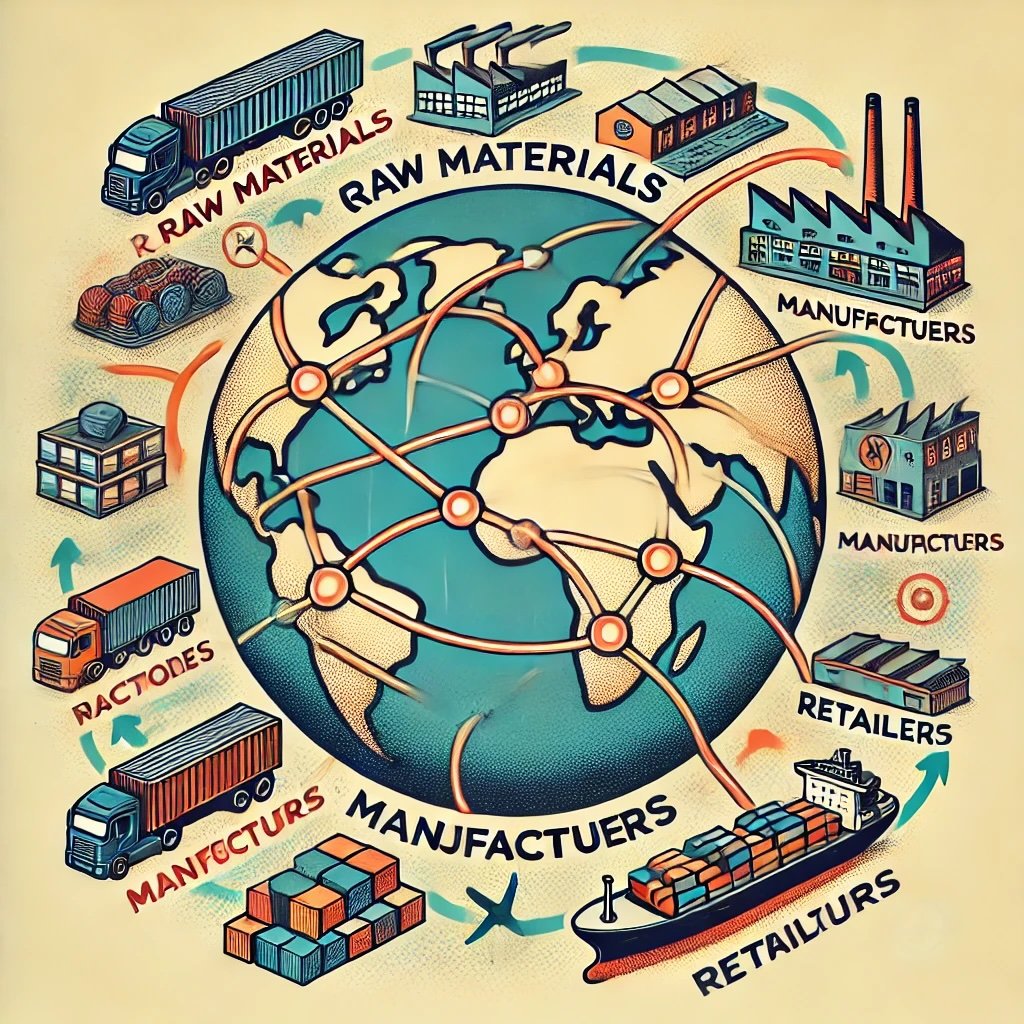
One critical aspect of modern business—often overlooked by casual observers but never by Buffett—is the global supply chain. Put simply, global supply chains are the arteries that connect raw materials to manufacturers, and ultimately, to consumers around the planet. These interconnected networks span continents, involving numerous suppliers, distributors, logistics providers, and retailers. They influence everything from the price of a Coca-Cola in Tokyo to the availability of smartphones in Buenos Aires.
Why should we care about Warren Buffett’s perspective on supply chains? First, Buffett’s track record speaks for itself. He has not only survived multiple market cycles but has thrived, amassing tens of billions of dollars in wealth over decades of disciplined investing. Second, he invests with the long term in mind, analyzing how economic forces—like supply chain resilience, geopolitics, and the movement of goods—will shape a company’s future. If a company depends on fragile or overly complex supply networks, Buffett is likely to either approach with caution or avoid it entirely. Conversely, if a company demonstrates robust supplier relationships and can deftly navigate global complexities, it might pique his interest.
Moreover, Buffett has never shied away from industries inherently tied to global supply chains. Consider railroads: Burlington Northern Santa Fe (BNSF), which Berkshire Hathaway acquired in 2010, plays a massive role in U.S. freight movement. The cargo transported includes consumer goods, energy resources, agricultural produce, and more—items that feed into, or result from, international trade. Then there’s his stake in Apple, a technology titan famous for orchestrating one of the most sophisticated global supply chains in existence. Buffett recognized not only Apple’s brand power but also its operational prowess in managing suppliers worldwide.
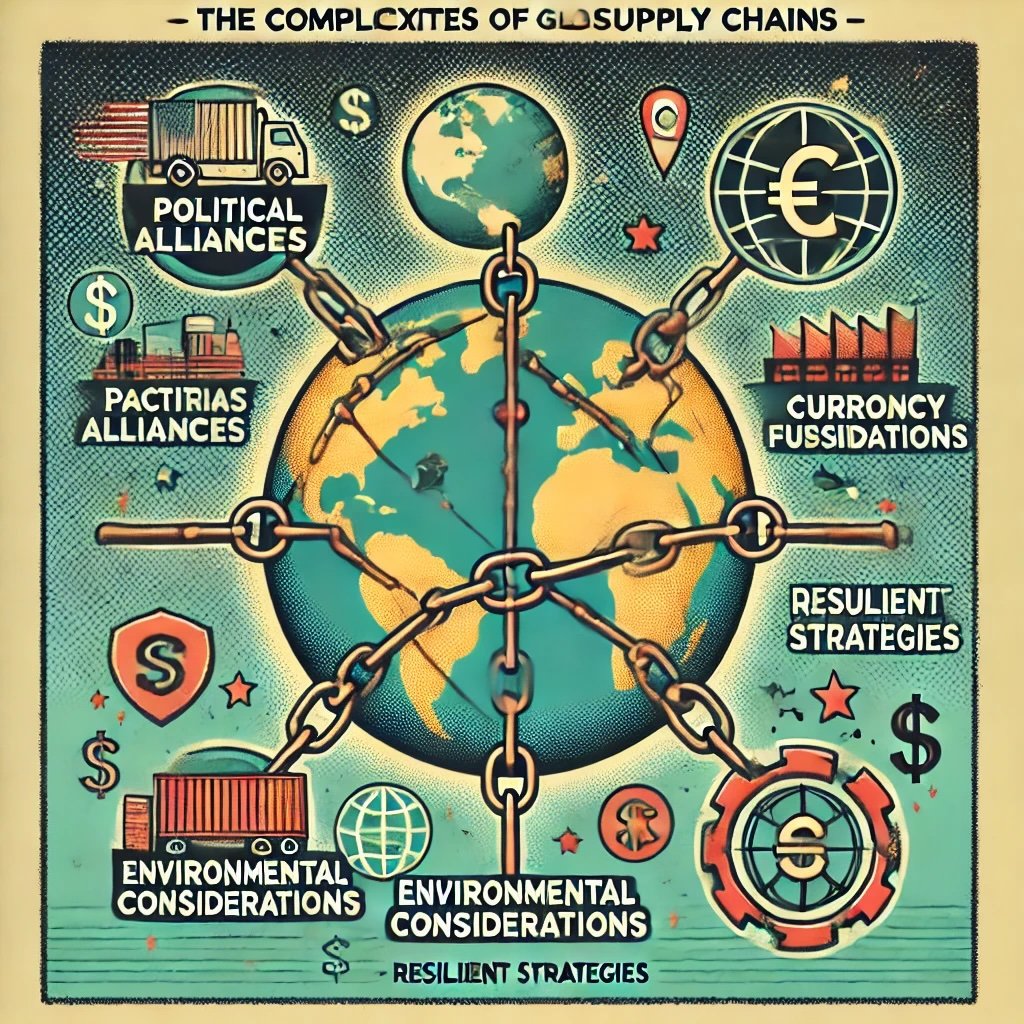
Global supply chains, however, aren’t just about physical goods. They entail shifting political alliances, currency fluctuations, environmental considerations, and countless cross-border regulations. Many corporations outsource part of their manufacturing to different countries to reduce labor costs, gain proximity to resources, or leverage specialized expertise. This system is efficient—until a disruption hits, such as a pandemic, trade war, or major natural disaster. In those moments, the cracks in a global chain become apparent, and companies with robust, flexible supply strategies pull ahead of competitors.
Buffett, ever pragmatic, looks at these dynamics to assess a company’s moat (or lack thereof) and management strength. If a leadership team deftly handles supply chain disruptions or invests in technologies to streamline logistics, that might signal enduring profitability. Conversely, if a firm’s supply chain is brittle and susceptible to a single point of failure (e.g., one sole supplier in a politically unstable region), Buffett might question the long-term viability of that firm’s margins.
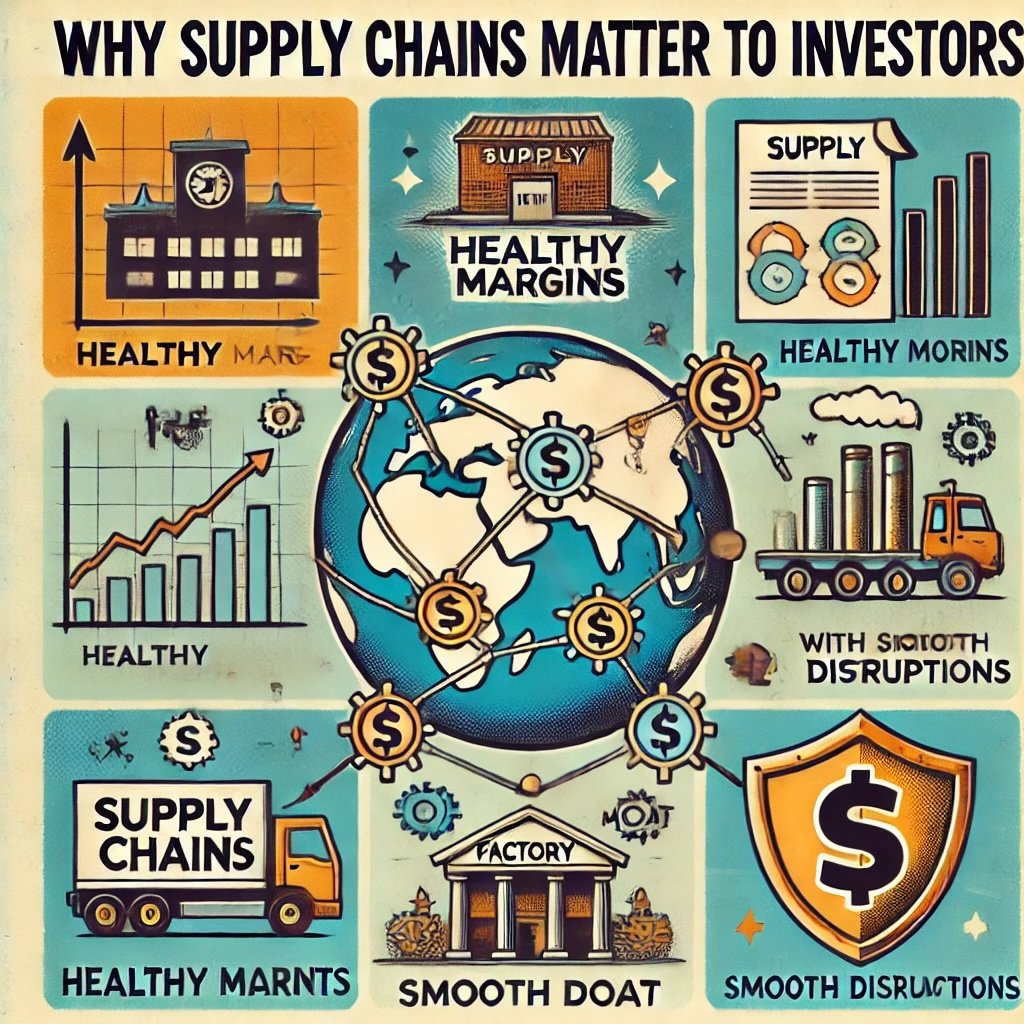
Understanding Global Supply Chains in Buffett’s Context
What Are Global Supply Chains?
Picture a consumer product—let’s say a smartwatch. It might be designed in California, with microchips from Taiwan, sensors from Germany, assembly in Vietnam, and final distribution channels in North America and Europe. The end user is anywhere on the planet. That’s a simplified illustration of a global supply chain. It’s a network of suppliers, manufacturers, logistics providers, and retailers that collaborate (sometimes seamlessly, sometimes chaotically) to bring a product from raw material to the consumer’s hand.
Global supply chains are not a new concept—trade routes date back centuries. Yet, the modern era, driven by container shipping, air freight, digital communication, and multinational corporations, has escalated the complexity. Companies source parts from specialized vendors in multiple countries to cut costs or improve quality. While this leads to efficiency gains and lower consumer prices, it also creates dependencies that can become vulnerabilities when disruptions occur.
Why Supply Chains Matter to Investors
For the average investor, supply chains might appear to be a behind-the-scenes topic—dry, technical, and not directly tied to daily stock price movements. But Buffett would argue otherwise. If a company’s supply chain is robust, it can adapt to shifts in demand, unforeseen shortages, or currency swings. If it’s fragile, the smallest glitch—like a factory shutdown or shipping delay—can lead to missed sales, inflated costs, or even reputational damage.
Think of supply chain efficiency as a silent hero in profitability. If a business sources raw materials at competitive prices, has reliable logistics that minimize delays, and can respond swiftly to market fluctuations, it’s often able to maintain healthier margins. On the other hand, if that same business runs into bottlenecks or unpredictable shipping costs, profitability suffers. In an interconnected world, a strike at a port in China or a shortage of semiconductors in Taiwan can ricochet around the globe, affecting stock prices in New York.
From Buffett’s vantage point, a well-managed supply chain underpins a company’s moat—ensuring stable or expanding margins and creating barriers to entry for would-be competitors. Companies that handle their global supply chains adeptly can deliver consistent results quarter after quarter, year after year, which is exactly the kind of predictability Buffett covets.
The Buffett Perspective
Warren Buffett famously invests within his “circle of competence.” He focuses on industries and business models he deeply understands. Over the years, his circle has expanded, particularly as Charlie Munger nudged him to consider consumer-facing tech companies like Apple. In each foray, however, Buffett insists on grasping the essential economics behind a firm’s supply chain and operations. If he doesn’t see a sustainable advantage or a well-managed logistical backbone, he tends to pass.
In Buffett’s eyes, a supply chain is not just about shipping products—it’s about forging dependable relationships, sustaining pricing power, and cultivating brand reputation. Take The Coca-Cola Company. Its supply chain extends worldwide, from securing sugar and other raw materials to distributing beverages across every continent except Antarctica. Because Coke has established local production and bottling partnerships, it mitigates currency and transportation risks. That resilience resonates with Buffett, who has famously held Coca-Cola shares for decades.
Similarly, in industries like railroads, the supply chain factor is not direct in the sense of purchasing raw materials, but it’s about delivering goods. BNSF’s role in shipping commodities, consumer goods, and industrial products across North America is a lynchpin in many supply chains. The stability and scale of that operation evidently appealed to Buffett, who saw how integrated BNSF is in the broader economy. If consumer demand grows or if companies nearshore production, they still need reliable freight solutions, and BNSF stands to benefit.
Lastly, Buffett respects that global supply chains are always susceptible to surprises—be they political disruptions, pandemics like COVID-19, or natural disasters. Thus, companies that diversify their supply bases, manage inventory prudently, and cultivate flexible manufacturing capabilities are more likely to endure. For investors, paying attention to these operational details can mean the difference between picking a resilient performer and investing in a firm that collapses under the first sign of crisis. Buffett’s approach, focusing on fundamentals and strong leadership, often uncovers companies that can handle unexpected hits without unraveling.
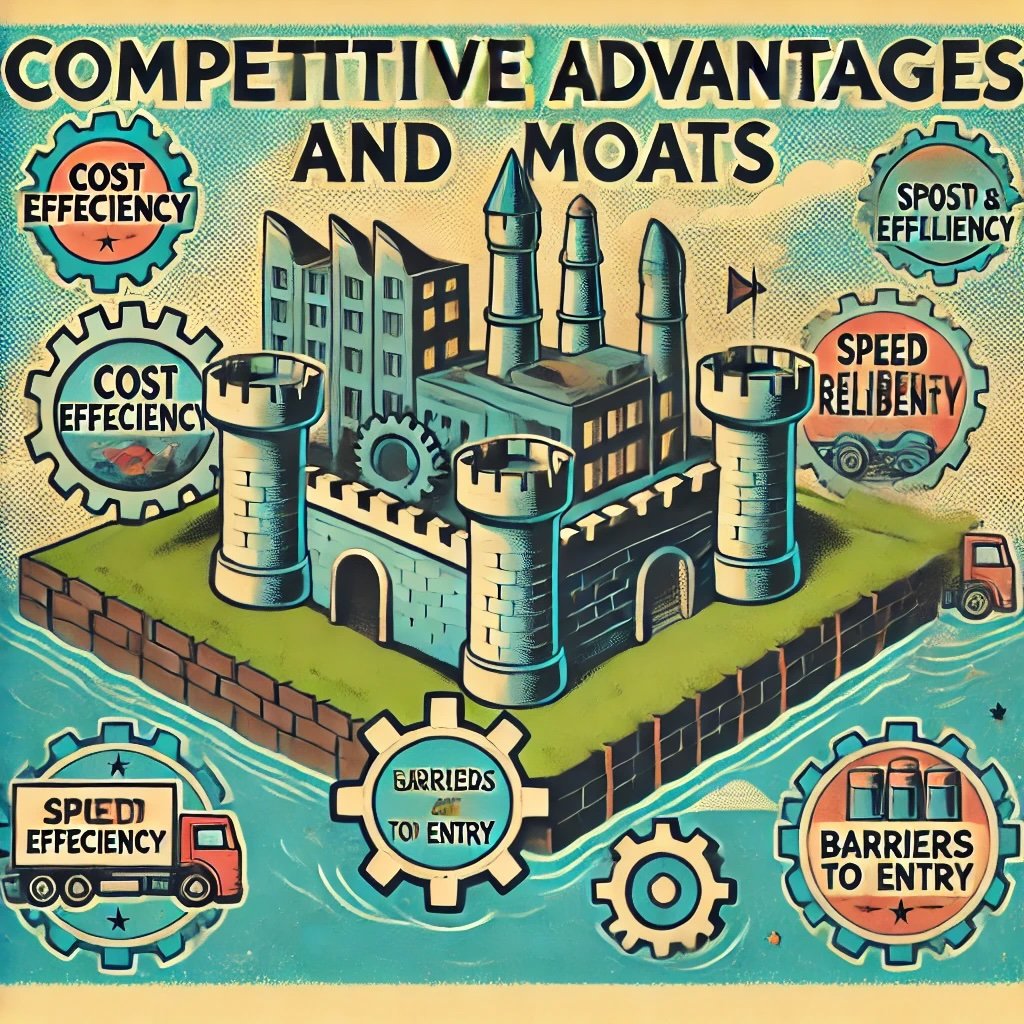
Core Principles Buffett Applies to Supply Chain-Related Investments
What guides Warren Buffett when he decides to pour millions—or billions—into a company whose fortunes depend on global supply chains? While his overarching philosophy remains the same—buy quality companies at fair prices and hold for the long term—there are specific principles that come to life when analyzing supply-chain-centric businesses.
Competitive Advantages and Moats
Buffett famously looks for a “moat” around a company—some distinct advantage that competitors cannot easily replicate. In supply chain terms, that moat could be:
- Cost Efficiency: A firm that sources materials at lower costs due to scale, preferred supplier relationships, or vertical integration.
- Speed and Reliability: A distribution network so polished that competitors struggle to match its shipping times or coverage.
- Barrier to Entry: Regulations, patents, or infrastructure hurdles that deter newcomers from setting up a similarly efficient supply chain.
The synergy of these elements can shield a business from margin erosion. For instance, if a competitor wants to match Coca-Cola’s global distribution, they face enormous startup costs, the need for local partnerships, and entrenched consumer preferences. That’s a high moat indeed, partially built on supply chain mastery.
Long-Term Thinking
Buffett shuns the short-term lens that fixates on the next quarter’s earnings. When it comes to supply chains, a short-term mindset might lead to penny-pinching decisions that hamper quality or reliability—like choosing the cheapest vendor even if their track record is spotty. Buffett prefers companies that invest for the future: securing stable relationships with suppliers, diversifying manufacturing sites to mitigate geographic risks, and implementing technology upgrades that improve data visibility across the chain.
This long-term approach underpins resilience. If a business invests in robust supply chain infrastructure today, it can adapt more easily to demand spikes or disruptions tomorrow. Over decades, that reduces volatility in earnings, something Buffett appreciates deeply.
Management Quality
No matter how promising a company looks on paper, if leadership cannot navigate the complexities of global supply chains, problems will arise. Buffett famously invests in management teams he trusts, believing that ethical, shrewd, and adaptive leaders can make all the difference when market conditions shift.
In supply chain terms, management quality reveals itself through prudent inventory policies, strategic supplier agreements, and decisions about capital expenditure on logistics or technology. A subpar team might chase immediate gains, ignoring signals of upcoming raw material shortages or failing to secure backups for critical components. Buffett, however, wants teams that foresee potential choke points and take proactive steps—like multi-sourcing components or building inventory buffers for essential parts.
Geopolitical and Economic Considerations
Global supply chains inherently cross borders, exposing companies to the whims of trade policies, tariffs, labor regulations, and regional politics. Buffett doesn’t typically time markets based on geopolitical events, but he evaluates how reliant a company might be on a single region. For instance, if a firm sources 80% of components from a country with potential political or trade instabilities, that’s a red flag.
Buffett also notes currency risks. If a company earns much of its revenue in one currency but pays suppliers in another, currency fluctuations can erode profit margins. Leadership that hedges these risks or diversifies manufacturing geographies can maintain more predictable earnings. In other words, a company that has “geopolitical resilience” in its supply chain is better aligned with Buffett’s preference for stability.
Resilience Over Perfection
It’s worth noting that Buffett does not expect supply chains to be flawless. Even the most carefully orchestrated network can encounter hiccups. But a robust supply chain strategy—built on diversification, reliable partnerships, forward-looking management, and consistent investment in improvement—can bounce back from disruptions more quickly than a brittle, cost-cutting model. Buffett’s track record shows he’s willing to overlook short-term profit dips if the company’s fundamentals (including supply chain structure) remain intact for future growth.
![]()
Case Studies: Buffett’s Investments and Supply Chain Strategies
Let’s move from theory to practice. Warren Buffett’s investment portfolio spans diverse sectors—from railroads and energy to consumer goods and technology. Each of these sectors has its distinct supply chain characteristics, and Buffett’s decisions reveal how he weighs supply chain reliability, scalability, and resilience.
Burlington Northern Santa Fe (BNSF)
Why Railroads Matter
When Buffett’s Berkshire Hathaway acquired the remaining shares of BNSF in 2010 (having previously built a substantial stake), many observers were curious. Why invest so heavily in a railroad company during the digital age? Buffett explained that railroads, while old-fashioned at first glance, remain essential to the U.S. economy. They transport bulk commodities (like grain, coal, and oil) and manufactured goods across vast distances at relatively low cost.
Supply Chain Integration
Railroads effectively function as an artery in the national supply chain. BNSF’s routes connect key agricultural regions, energy production sites, and ports to distribution centers. This coverage is incredibly difficult for any competitor to replicate. Moreover, shifting cargo from trucks to trains can reduce congestion and lower emissions, making rail an attractive option as fuel costs or environmental regulations evolve.
Buffett’s Long-Term Vision
Buffett envisioned that as American commerce continued, BNSF would remain integral to moving goods efficiently, even if the nature of those goods evolved. The supply chain tie-in is crystal clear: if you want a stable foothold in the movement of products across America, own part of the infrastructure that underpins it.
Apple
A Tech Giant with a Global Web
Apple’s supply chain is legendary. The company sources components globally—screens from one region, chips from another—and assembles products in massive manufacturing hubs, primarily in Asia. Then it ships these iPhones, Macs, and other devices worldwide. Buffett’s substantial stake in Apple reflects not only the brand’s consumer appeal but also the operational excellence of its supply chain.
Supply Chain Mastery
Apple regularly invests in securing priority access to critical components, whether that’s flash memory or advanced chips. It also builds strong relationships with key suppliers, sometimes paying upfront or co-investing in facilities. This level of supply chain control helps Apple manage disruptions better than rivals, ensuring product launches hit deadlines and meet demand. Buffett, seeing Apple’s robust profitability and moats (brand loyalty, integrated ecosystem), was willing to overlook the fact that it’s a tech company, typically outside his historical comfort zone.
Risk Management
That said, Apple does face geopolitical and tariff risks, especially as many assembly plants remain in China. Yet, Apple’s moves to diversify production (e.g., shifting some manufacturing to India or Vietnam) likely resonates with Buffett’s emphasis on not depending too heavily on a single region. The interplay of strong management, brand power, and supply chain adaptability underscores Apple’s position in Buffett’s portfolio.
Coca-Cola and Consumer Staples
Global Distribution
Coca-Cola is among Buffett’s oldest and most famous holdings. Supply chain plays a central role here: from securing consistent sources of sweeteners to bottling partnerships in nearly every continent. Coca-Cola’s approach ensures that local facilities produce beverages tailored to regional tastes and market conditions.
Brand Strength and Logistics
The synergy between brand loyalty and local production helps Coca-Cola offset inflationary pressures or currency fluctuations. If sugar prices rise in one region, local management can tweak formulations or pass minimal price increases to consumers without losing market share. With an established logistical network, the company can respond swiftly to changing dynamics in raw material costs or consumer demand patterns.
Buffett’s Faith
Buffett has repeatedly noted the simplicity and resilience of Coca-Cola’s business model. He doesn’t have to worry about radical technology shifts overnight, nor does he fear losing consumer interest (people keep drinking soda, arguably in stable or growing volumes). The reliable global supply chain, paired with a near-universal brand, makes Coca-Cola a quintessential Buffett investment.
Utilities and Energy Investments
Berkshire Hathaway Energy
Under the Berkshire umbrella, Berkshire Hathaway Energy (BHE) manages utilities and energy projects. While the “supply chain” concept might appear less direct in energy, it still manifests in fuel sourcing, infrastructure, and distribution networks. Whether it’s natural gas pipelines or wind farms, BHE invests heavily in stable, long-term energy infrastructure that ensures consistent power delivery.
Strategic Control
Buffett sees utilities as public necessities. People will pay for electricity, heating, and water, come what may. By owning and modernizing these infrastructures, BHE secures stable revenue streams. The supply chain dimension here relates to how the company sources fuel, maintains grid reliability, and navigates regulatory frameworks. A robust, well-maintained system with minimal downtime and environmental compliance garners public trust and consistent returns.
Resilience and Regulation
BHE also invests in renewables, anticipating shifts in energy supply chains toward cleaner sources. Regulatory changes can hamper or boost certain projects, but Buffett’s viewpoint remains that essential services endure. With strong leadership and a cautious approach to risk, these energy assets are less prone to wild market swings, aligning with Buffett’s preference for reliability over flashy gains.
![]()
Challenges and Risks in Global Supply Chains
Global supply chains, for all their benefits, expose companies to a range of complex challenges. Buffett’s method addresses many of these vulnerabilities, but no system is immune. By understanding the major pitfalls, investors can gauge how well a business might withstand disruptions.
Geopolitical Instability
Trade Wars and Sanctions
In recent years, tensions between major economies—like the United States and China—have led to tariffs, sanctions, and stricter regulations. These measures can abruptly alter cost structures, forcing companies to shift manufacturing bases or pay higher duties. Buffett monitors geopolitical trends to determine if a firm’s exposure to certain regions is too high. If a company relies on a single country with unpredictable relations, that’s a risk to stable profitability.
Regional Conflicts
Armed conflicts or regional disputes can disrupt logistics routes or damage infrastructure. For instance, a pipeline crossing contested territory might face sabotage or closures, affecting energy supply. Buffett’s approach generally favors diversification and robust contingency plans, minimizing the impact of any single region’s conflict.
Disruptions from Pandemics and Natural Disasters
COVID-19 as a Lesson
The COVID-19 pandemic offered a harsh lesson in how quickly supply chains can seize up. Factory shutdowns, port closures, and labor shortages rippled across the globe. Corporations that lacked multiple sourcing options or local production capabilities saw massive backlogs. In Buffett’s world, this underscores the value of management teams that plan for black swan events, maintain strategic inventory, and cultivate flexible supplier relationships.
Natural Catastrophes
Earthquakes, tsunamis, hurricanes—extreme weather events can destroy critical infrastructure or hamper transportation routes. A single severe storm can strand ships, block rail lines, or knock out power grids. Buffett invests in companies he believes can weather these literal storms, either through insurance hedges, well-distributed assets, or robust repair funds.
Increasing Costs and Inflation
Commodity Price Swings
Global supply chains rely on commodities—metals, grains, oil, and more. Price spikes or collapses can wreak havoc on margins. If a company can’t pass these costs on to consumers, its profits get squeezed. Buffett’s principle of investing in firms with pricing power helps offset this risk.
Labor Costs and Logistics
As wages rise in certain countries, companies may re-evaluate where they manufacture or assemble products. Transportation costs—like freight shipping and fuel—can also swing dramatically. Buffett’s emphasis on leadership means he looks for executives who can pivot, relocating production if necessary and renegotiating contracts to maintain competitiveness.
Technological Disruptions
Automation and AI
Robotics, artificial intelligence, and other advanced technologies are rapidly changing how goods are produced and moved. An organization that fails to invest in such innovations might fall behind more agile rivals. While Buffett doesn’t chase fads, he recognizes that forward-thinking companies reconfigure their supply chains with automation to reduce costs, accelerate output, and enhance reliability.
Blockchain and Digitized Supply Chains
Some firms use blockchain to track products from raw material to store shelf. Such transparency can reduce fraud, streamline customs processes, and improve recall efficiency. Buffett may not delve into blockchain’s intricacies, but he does pay attention if a company’s supply chain technology provides a durable advantage or brand trust—both qualities that align with his value-investing criteria.
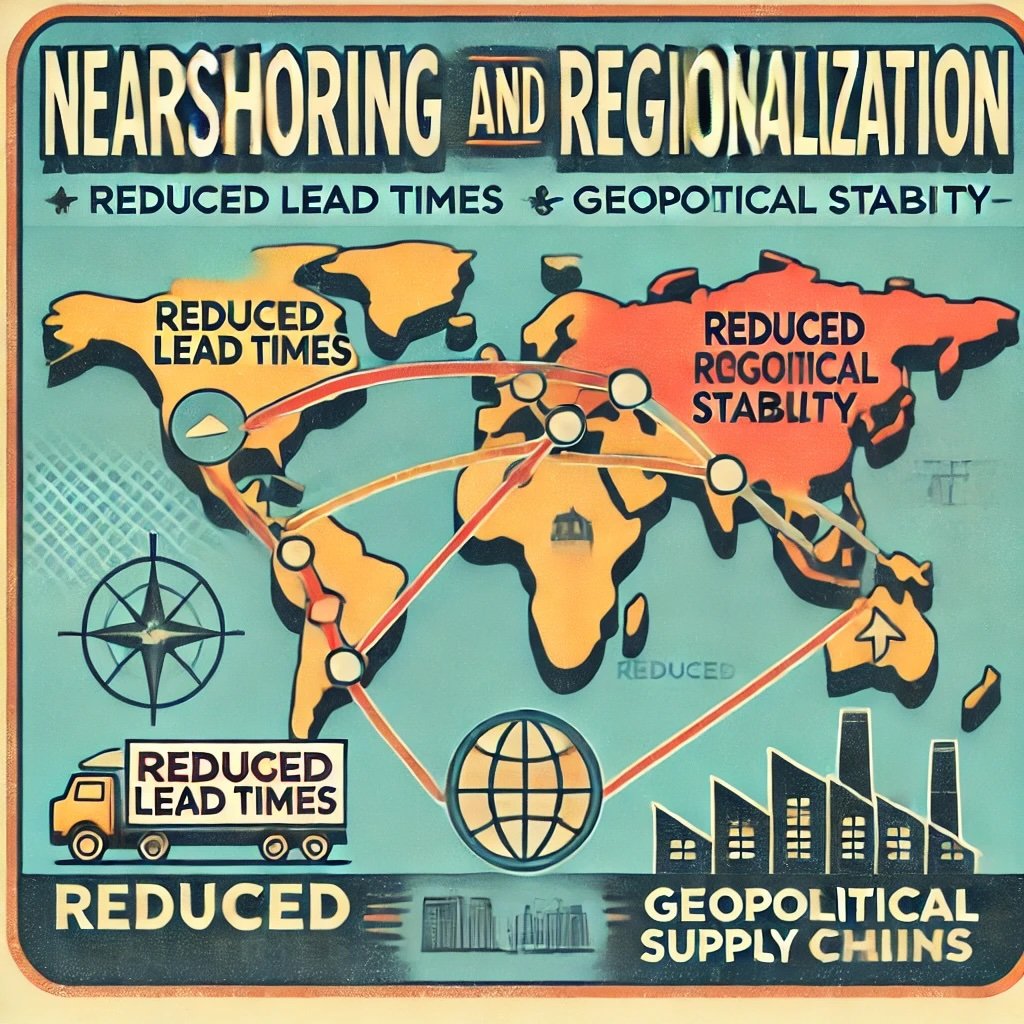
Future Trends and Buffett’s Likely Approach
As globalization continues to evolve, new supply chain paradigms are emerging, posing both opportunities and pitfalls for investors. Buffett, ever the pragmatist, would likely evaluate these trends in terms of their ability to generate reliable earnings and maintain robust moats.
Nearshoring and Regionalization
Moving Closer to End Markets
Recent global events—like rising tariffs, pandemic shocks, and shipping cost spikes—prompt some businesses to shorten their supply lines. Instead of manufacturing halfway around the planet, they may build factories nearer to key consumer markets (nearshoring). This shift can help reduce lead times, mitigate geopolitical risks, and align production with demand more precisely.
Buffett’s Take
Buffett might appreciate companies that adopt a sensible regional strategy, as it often enhances agility and reduces reliance on far-flung suppliers. However, nearshoring can involve higher labor costs if it means relocating to more expensive regions. Buffett would check if the resultant supply chain efficiency outweighs these costs—essentially performing a cost-benefit analysis at scale.
Digitization of Supply Chains
Real-Time Monitoring
Technologies like Internet of Things (IoT) sensors and advanced analytics offer unprecedented visibility. Companies can track shipments in real time, predict disruptions, and dynamically reroute cargo. This can slash inventory costs and improve accuracy in demand forecasting.
Buffett’s Likely Stance
Though Buffett himself might not dive into the technical minutiae, he respects business advantages that come from actionable data. If a company’s digital logistics system consistently translates into lower costs or quicker turnaround, that advantage could become a formidable moat. However, he’d want to see evidence of sustained ROI rather than ephemeral buzz.
Buffett’s Likely Strategies for Future Investments
Industries Poised for Growth
With nearshoring, we might see expansions in domestic transportation (rail, trucking, and warehousing) plus the development of industrial zones closer to big consumer markets. Buffett might favor industrial real estate or logistics firms that stand to gain from these shifts, provided they have strong leadership and stable finances.
Consolidation and Infrastructure Plays
As companies revamp their supply chains, there could be consolidation among logistics providers, container shipping lines, or warehousing networks. Buffett might spot an opportunity if a particular firm or sector becomes the “trusted integrator” that orchestrates these complex networks. Additionally, he might deepen his involvement in energy infrastructure if that becomes central to fueling new manufacturing hubs.
The Apple Factor
Buffett’s stake in Apple, one of the largest in Berkshire Hathaway’s portfolio, also indicates he’s open to investing in tech-enabled consumer product giants. Apple’s supply chain mastery allows it to pivot nimbly—even as it explores diversifying assembly lines beyond China. If more tech players adopt Apple-like strategies (e.g., locking in critical component suppliers, building cross-continental production footprints), Buffett could see additional chances for strategic investment.
![]()
How Warren Buffett Views Global Supply Chains With Investments — 12-Question FAQ
How central are global supply chains to Buffett’s investment lens?
Very. He studies whether a company’s supply chain supports durable margins and predictable cash flows. If logistics, sourcing, and distribution are resilient—reducing volatility—he’s more likely to view the business as having a defendable moat.
What supply-chain traits map to a Buffett-style “moat”?
Three big ones: cost advantage at scale, speed/reliability of delivery, and barriers to replication (regulatory licenses, localized bottling/assembly, exclusive contracts). When rivals can’t easily match those, pricing power is safer.
Why did Berkshire buy BNSF if Buffett prefers “simple” businesses?
Rail is “simple” but essential: it’s the arterial network of U.S. freight. Owning BNSF ties Berkshire to the backbone of countless supply chains—grains, energy, imports/exports—creating long-duration, inflation-resilient cash flows.
How does he square Apple (complex, global) with his “circle of competence”?
He reframed Apple less as “tech” and more as a consumer-ecosystem with extraordinary operations. Apple’s supplier breadth, pre-buys, and multi-country assembly de-risk launches, reinforcing brand moat and recurring cash generation.
What does Buffett look for in consumer staples’ supply chains?
Local production + local partners (e.g., bottlers) to reduce freight, tariffs, and FX risk; procurement scale for inputs; and distribution density that keeps shelf space and lowers per-unit logistics cost—fueling steady unit economics.
How does he judge management through a supply-chain lens?
By their optionality (multi-sourcing, second sites), inventory discipline (carry where it matters, not everywhere), contracting savvy (hedges, take-or-pay, capacity reservations), and capex choices that improve reliability, not vanity metrics.
What red flags suggest a brittle supply chain?
Single-region dependence, thin supplier benches for critical parts, long lead-times with no buffers, unhedged FX or commodity exposure, and a history of expedite costs or missed launches—tells he’d discount future “predictability.”
How do inflation and supply chains intersect in his framework?
Inflation magnifies weak links. He prefers pricing power + low capital intensity and contracts that reset (e.g., indexed tariffs/rates). Rail, utilities, quality brands, and certain logistics assets often pass costs without losing volume.
Where does geopolitics fit?
He won’t time politics, but he measures concentration risk. Firms diversifying assembly (e.g., China + India/Vietnam/Mexico), balancing supplier currency mixes, and designing regional supply webs earn a higher quality mark.
What role does digitization play (IoT, planning, visibility)?
Buffett isn’t chasing buzzwords; he wants measurable advantages: lower stock-outs, fewer expedites, better asset turns. If digital tools tighten the cash conversion cycle and improve service levels, that strengthens the moat.
How might nearshoring change his opportunity set?
Nearshoring boosts domestic transport, warehousing, power, and industrial real estate. He’d favor infrastructure-like cash flows and trusted integrators that orchestrate regional networks—provided returns are durable and regulated risks manageable.
What’s a simple Buffett-style checklist for supply-chain resilience?
(1) Can it raise prices with minimal volume loss? (2) Two+ qualified suppliers for critical parts? (3) Regionalized capacity to hedge shocks? (4) Contracts/hedges that tame FX and inputs? (5) Evidence that ops improvements drop to free cash flow?
Conclusion
Warren Buffett’s long-held formula for investing—find outstanding businesses, buy them at reasonable prices, and hold for the long run—carries particular relevance in a globally networked economy. Supply chains, once seen as logistical footnotes, have emerged as a decisive factor in whether a company can maintain margins, adapt to shocks, and scale across borders. By examining how Buffett evaluates supply chains—focusing on economic moats, management quality, geopolitical awareness, and resilience—it becomes clear that his approach is both methodical and forward-thinking.
From his substantial investment in Burlington Northern Santa Fe to his later embrace of Apple shares, Buffett demonstrates that supply chain considerations aren’t confined to “boring” industrial plays. They matter just as much in cutting-edge consumer electronics as they do in transporting commodities by rail. The unifying theme is stability paired with flexibility. He seeks companies whose supply chain operations offer cost advantages, reliable product availability, and the capacity to adapt when crises—be they trade wars, pandemics, or natural catastrophes—strike.
Of course, not every enterprise passes Buffett’s litmus test. Some rely too heavily on a single region, exposing themselves to political or currency hazards. Others chase short-term cost savings without building robust, long-term supplier relationships. Still others neglect technological upgrades that could future-proof their distribution systems. Buffett’s skepticism toward such models underscores a lesson for all investors: a supply chain might look profitable today, but if it lacks resilience, earnings can vanish swiftly when disruptions occur.
Looking ahead, trends like nearshoring, sustainability, and supply chain digitization promise to reshape how goods move worldwide. This evolution could bring new opportunities for strategic investments—or highlight vulnerabilities in older models that fail to adapt. Yet, Buffett’s guiding principles remain timeless. He’ll continue to favor leaders who think broadly, anticipating shifts in supply or demand. He’ll seek industries that command brand loyalty, cost efficiencies, and the ability to pass on price changes to consumers without sacrificing market share. And he’ll champion management teams that treat supply chain investments not as a cost center but as a competitive advantage.
For individual investors drawing insights from Buffett’s playbook, the key is to scrutinize your chosen companies with similar rigor. Ask questions like: Do they have diversified suppliers? How easily can they pivot if a major node in their supply chain fails? Are they building new distribution models or clinging to outdated ones? Is the leadership forthright about potential supply chain risks and how they might mitigate them? The answers can reveal whether a firm has the backbone to flourish over decades or if it’s teetering on a precarious edge.
Important Information
Comprehensive Investment Disclaimer:
All content provided on this website (including but not limited to portfolio ideas, fund analyses, investment strategies, commentary on market conditions, and discussions regarding leverage) is strictly for educational, informational, and illustrative purposes only. The information does not constitute financial, investment, tax, accounting, or legal advice. Opinions, strategies, and ideas presented herein represent personal perspectives, are based on independent research and publicly available information, and do not necessarily reflect the views or official positions of any third-party organizations, institutions, or affiliates.
Investing in financial markets inherently carries substantial risks, including but not limited to market volatility, economic uncertainties, geopolitical developments, and liquidity risks. You must be fully aware that there is always the potential for partial or total loss of your principal investment. Additionally, the use of leverage or leveraged financial products significantly increases risk exposure by amplifying both potential gains and potential losses, and thus is not appropriate or advisable for all investors. Using leverage may result in losing more than your initial invested capital, incurring margin calls, experiencing substantial interest costs, or suffering severe financial distress.
Past performance indicators, including historical data, backtesting results, and hypothetical scenarios, should never be viewed as guarantees or reliable predictions of future performance. Any examples provided are purely hypothetical and intended only for illustration purposes. Performance benchmarks, such as market indexes mentioned on this site, are theoretical and are not directly investable. While diligent efforts are made to provide accurate and current information, “Picture Perfect Portfolios” does not warrant, represent, or guarantee the accuracy, completeness, or timeliness of any information provided. Errors, inaccuracies, or outdated information may exist.
Users of this website are strongly encouraged to independently verify all information, conduct comprehensive research and due diligence, and engage with qualified financial, investment, tax, or legal professionals before making any investment or financial decisions. The responsibility for making informed investment decisions rests entirely with the individual. “Picture Perfect Portfolios” explicitly disclaims all liability for any direct, indirect, incidental, special, consequential, or other losses or damages incurred, financial or otherwise, arising out of reliance upon, or use of, any content or information presented on this website.
By accessing, reading, and utilizing the content on this website, you expressly acknowledge, understand, accept, and agree to abide by these terms and conditions. Please consult the full and detailed disclaimer available elsewhere on this website for further clarification and additional important disclosures. Read the complete disclaimer here.



